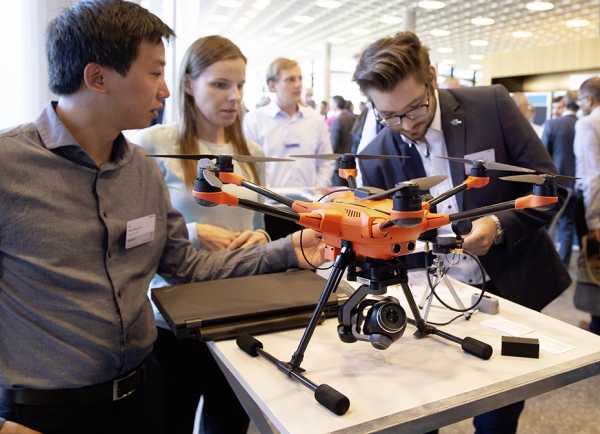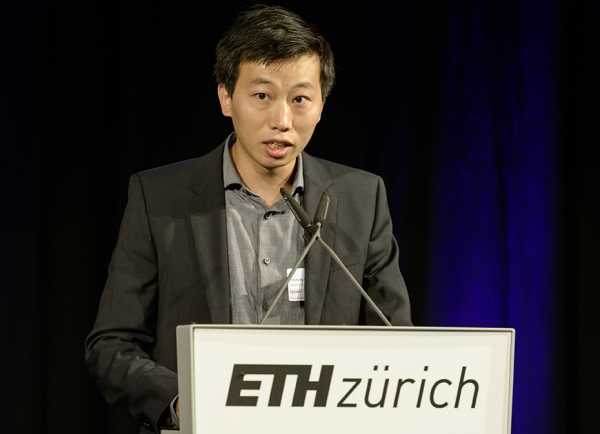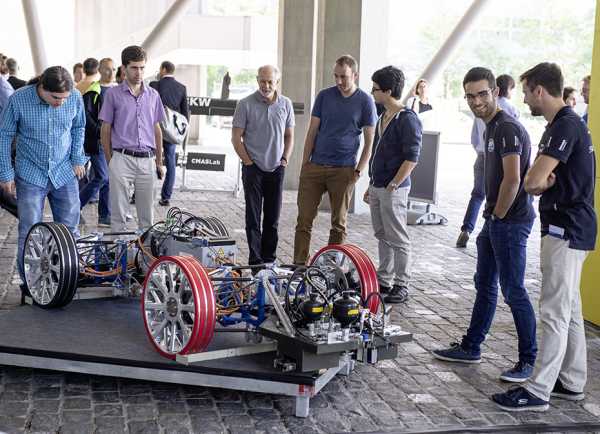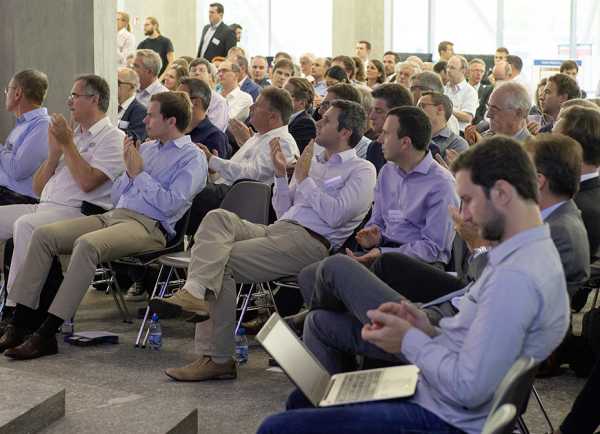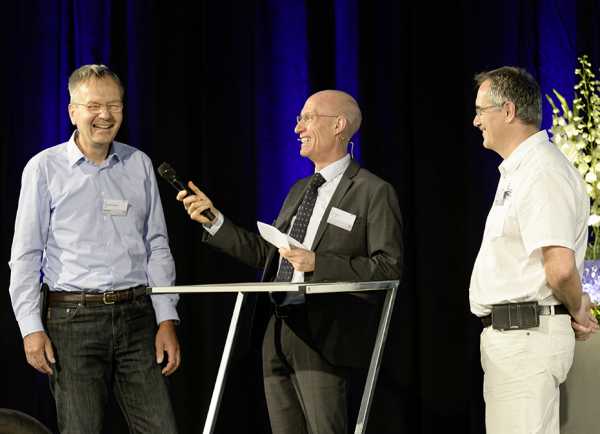Collaborative innovation
A building made entirely of timber – without playing with fire. How this works was demonstrated by one of the case studies at the ETH Industry Day 2018, the major annual exchange platform featuring industry and the university. The event attracted more than 500 attendees from the business community.
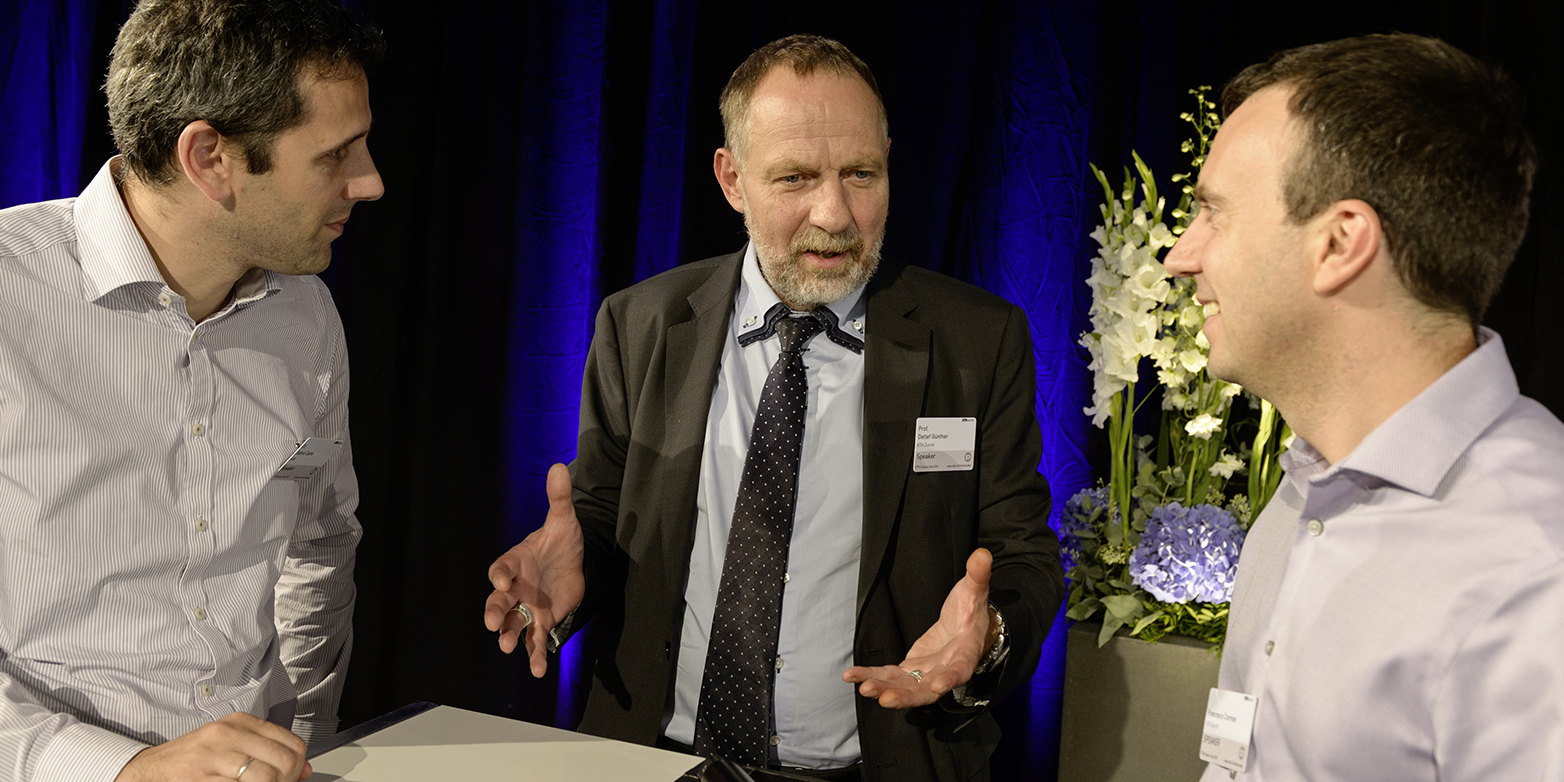
Using timber rather than concrete and steel to construct multi-storey buildings has long been considered too risky, due to the inherent fire hazard. A collaboration between ETH and industry has found a way of making high-rise timber buildings that are fireproof. Speaking at ETH Industry Day 2018 – its motto, "Game-changing ideas" – Professor Andrea Frangi said this heralds a renaissance for timber construction, not least thanks to studies conducted by ETH on the fire behaviour of cross laminated timber and the adhesives used. Frangi was very positive about the possibility of carrying out projects with industry, with his students appreciating the chance this gave them to acquire practical experience. Christian Lehringer from industrial partner Henkel Engineered Wood Adhesives also thought highly of the collaboration, emphasising his firm's "trusting relationship" with ETH.
The annual ETH Industry Day aims to further consolidate the traditionally strong ties that exist between ETH research and its implementation by industry. Detlef Günther, Vice President for Research and Corporate Relations at ETH Zurich, emphasised in his opening address the importance of exchanging knowledge: "Industry has the practical expertise; we have the latest technologies. Together we find solutions." Günther also pointed out another opportunity for direct exchange: the ETH sabbatical, which he cordially invited industry to take advantage of.
"Industry has the practical expertise; we have the latest technologies. Together we find solutions."Detlef Günther, Vice President for Research and Corporate Relations
How ETH and industry intermesh
This year's Industry Day saw 16 ETH researchers and ETH spin-offs presenting their research projects and activities in a series of brief presentations. Originating in areas such as health & nutrition, data science, mobility & energy and robotics & manufacturing, the focal points were each accompanied by a case study in video form. A well-attended exhibition featuring posters by ETH researchers also encouraged the attendees from industry and the ETH to engage in useful exchanges of experience.
The mobility & energy presentation, for example, demonstrated how rail transport can be optimised: Gabrio Caimi from the Swiss Federal Railways explained how the use of algorithms and operations research methods could both increase capacities and reduce costs. Caimi explained that the partnership between the SFR and ETH had been in existence for a long time, but has intensified: an ETH doctoral student is currently working for the SFR on a part-time basis, while the previous PhD student was recruited by the SFR after completing his doctoral thesis.
Discovering biomolecules using scattered light
The health & nutrition case study saw ETH professor János Vörös and Christof Fattinger from Roche demonstrating how new processes speed up blood and urine tests. Vörös explained how he had long harboured the ambition of facilitating blood tests in situ to avoid lengthy laboratory testing. One day Fattinger approached him with the idea of using molography technology to render even the smallest biomolecules visible using scattered light.
Fattinger, who completed a sabbatical at ETH Zurich in 2011, said that the development would not have been possible without ETH: the research and development occurs in ETH laboratories. The researchers' discovery could change diagnostics, with Fattinger seeing speed as the major advantage of molography: "The quantification of biomarkers using molography is rapid and can even occur in real time."
Impressions from ETH Industry Day 2018 (all photographs: ETH Zurich / Oliver Bartenschlager)
Further photographs can be found here.
Shedding light on dark data
The data science case study focused on improving the efficiency of dataset processing. Zurich Insurance was faced with the problem of unstructured datasets in a variety of formats which were not machine-readable, explained the insurer's Gero Gunkel. By working with ETH, Gunkel hopes to be able to automate the data processing and "shed light on dark data".
rofessor Ce Zhang explained how he and his team are using an "automated system featuring millions of generated examples" to solve the "machine-learning" problem, allowing machines to read data and reports instead of people. They have already achieved promising results and published them in scientific journals. "The next step is to work with industry partners to fine-tune the system to their applications," says Zhang.
The ETH spin-offs, which were also present at ETH Industry Day, contribute directly to ETH Zurich's close connections with industry. Fixposition, for example, has developed products for the navigation of autonomous vehicles such as drones and self-driving cars. There should be no lack of demand: co-founder Zhenzhong Su sees immense market potential from 2020 – internationally. Fixposition's next step will be a market test in China this month.
Following the presentations, the attendees took the opportunity to exchange views and ask questions while viewing the poster exhibition. And thanks to the newsletter launched in 2017, this is also possible online using the ETH website devoted to industry.

